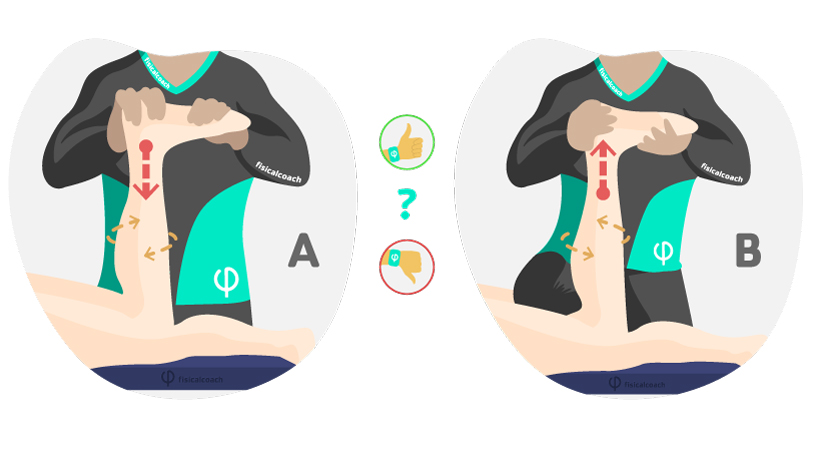
Apley test
The purpose of the test is to assess possible injury to the meniscus and parameniscal regions (compression test), as well as to assess injuries to the ligaments or joint capsule (distraction test).
- Required material: A physiotherapy couch. If the test is performed on the floor, a mat is required.
- Procedure: The subject lies in a prone position (face down), with the knee to be assessed in 90º flexion.
- A) Compression test: The assessor grasps and fixes the plantar aspect of the forefoot with one hand and the rearfoot with the other, exerting downward pressure and rotation to both sides on the knee being assessed (Illustration A).
- B) Distraction test: The evaluator fixes the lower extremity with his knee resting on the back of the subject’s thigh. The dorsal side of the forefoot is grasped and fixed with one hand and the rearfoot is grasped and fixed on the insertional region of the Achilles tendon with the other hand, exerting upward pressure and rotation on both sides of the assessed knee (Illustration B).
- Assessment: A) Compression test: The test is considered abnormal or positive when, upon compression, the subject manifests some type of pain, discomfort or joint noise when performing rotational movements, being indicative of injury to the meniscal structures. The appearance of pain with internal rotation suggests a lesion of the external meniscus, while pain associated with external rotation indicates a lesion of the internal meniscus. If no pain is present, the test is considered normal or negative. B) Distraction test: The test is considered abnormal or positive when, on traction, the subject manifests some type of pain, discomfort or joint noise when performing rotational movements, being indicative of the possibility of a ligamentous and/or capsular injury. If no pain is present the test is considered normal or negative.
- Remarks: Prior to performing this test, it is possible to check whether deep flexion, extension, rotation and combinations of movements are compatible in the knee.
Take this test and 139 more in our App